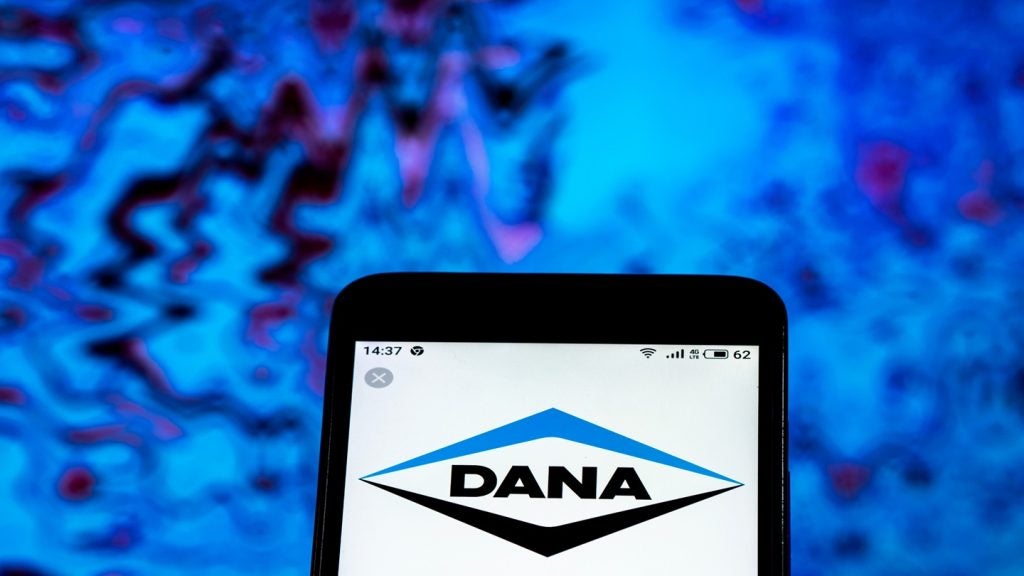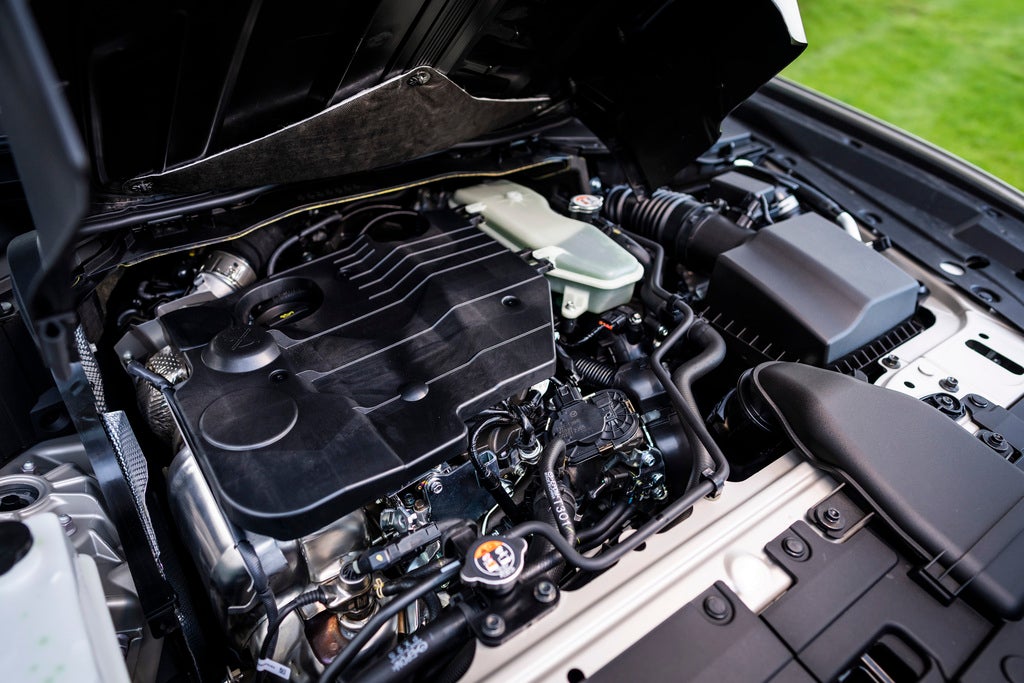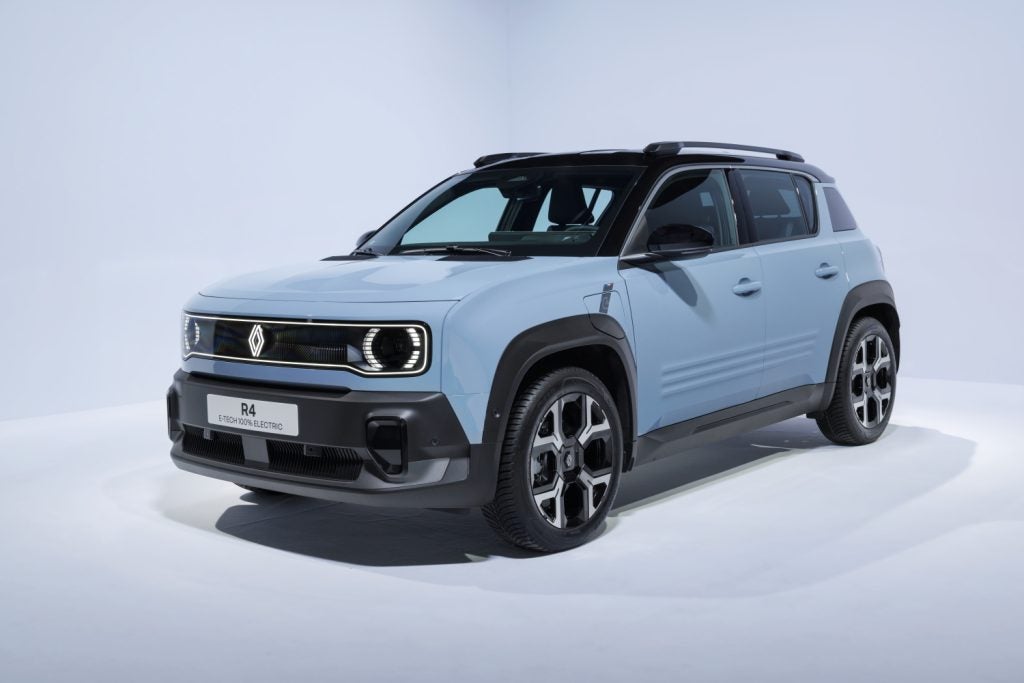 Representatives from Europe’s automotive industry gathered in Gothenburg, Sweden, this week for the sixth annual Automotive News Europe Congress. Once again, the organisers lined up an impressive selection of speakers and Volvo’s celebration of 75 years in the automotive business helped to ensure some fine hospitality. Dave Leggett went along.
Representatives from Europe’s automotive industry gathered in Gothenburg, Sweden, this week for the sixth annual Automotive News Europe Congress. Once again, the organisers lined up an impressive selection of speakers and Volvo’s celebration of 75 years in the automotive business helped to ensure some fine hospitality. Dave Leggett went along.
I had quite a gruelling journey to Gothenburg via Amsterdam but the excellent cocktail reception sponsored by Volvo last Sunday evening helped me forget that I had wasted several hours changing planes at Schiphol airport earlier that day. Fresh seafood, some familiar faces and a glass or two of beer; I was feeling better already.
The conference documentation suggested that Monday would be a long and fairly intensive day and it was. The conference theme was ‘strategic challenges in a changing industry’. In the automotive industry, there are always plenty of those.
What follows is my (unashamedly) personal account of some of the highlights.
Steve Young, from AT Kearney, kicked off the proceedings with a slightly depressing reality check. It’s a tough market and the fight for margin is intense. He seemed to be saying that dealers are doing relatively well versus the OEMs and their suppliers – at least in terms of ‘cash flow return on invested capital’. Something called ‘Altman’s Z-Score’ (don’t you just love consultants) indicated that a third of suppliers are in ‘fiscal danger’ (i.e. could go out of business). Mergers and acquisition spending has, unsurprisingly, dried up lately (2001 off 1998 by 96% in North America and 70% in Europe).
How well do you really know your competitors?
Access the most comprehensive Company Profiles on the market, powered by GlobalData. Save hours of research. Gain competitive edge.

Thank you!
Your download email will arrive shortly
Not ready to buy yet? Download a free sample
We are confident about the unique quality of our Company Profiles. However, we want you to make the most beneficial decision for your business, so we offer a free sample that you can download by submitting the below form
By GlobalDataEuropean car production in the first quarter of 2002 was 8% lower than the first quarter of 2001.
In short, the business environment is not a pretty one right now.
Jean-Martin Folz – President of PSA Peugeot Citroën
Jean-Martin Folz had an early slot on Monday morning. His ‘keynote’ presentation seemed similar in style and substance to presentations he has given before, but nevertheless was a good update on where PSA is today.
“According to Mr Folz, the turnaround of the company continues” |
Mr Folz outlined PSA’s ‘five-point strategy’. First point: product. In 2001, there were four new models. In 2002, there were six and over the 2001-2004 period, PSA plans no fewer than 25.
He pointed out that the Peugeot 206 was the top selling model in Europe in 2001 (achieving 830,000 sales worldwide) and now the range gets an injection with the 206 estate/wagon. The Peugeot 307 will do over 500,000 units this year as the range is filled out.
He also concentrated a little on the Berlingo/Partner models, pointing out that in some segments of the market, PSA is not afraid to have only limited differentiation between Peugeot and Citroen offerings. Citroen’s image is getting a boost with the Picasso MPV and the C3 he said. But get ready for the Citroen Pluriel on the market ‘within a few quarters’.
The second point in the five-point plan is technology.
 Perhaps quite naturally, this led into PSA’s diesel engines performance. PSA produced 1.55 million diesel engines in 2001. High-pressure diesel injection (HDI) has been a growth driver. Mr Folz argued that the PSA developed particle filter is a true innovation and results in a dramatic reduction in particle emissions. The filters were fitted to 114,700 diesel engines in 2001 and fitment is rising strongly.
Perhaps quite naturally, this led into PSA’s diesel engines performance. PSA produced 1.55 million diesel engines in 2001. High-pressure diesel injection (HDI) has been a growth driver. Mr Folz argued that the PSA developed particle filter is a true innovation and results in a dramatic reduction in particle emissions. The filters were fitted to 114,700 diesel engines in 2001 and fitment is rising strongly.
The third point in the PSA five-point plan is international presence. Mr Folz produced an array of stats that he claimed showed rising share in South America, East/Central Europe.
In Asia, he said that PSA has struck a new agreement with its Chinese partner Dongfeng. Investment will be stepped up. By 2004, six models will be produced by the joint venture in Wuhan. The Peugeot brand is being introduced to China also and a new industrial joint venture formed.
The fourth point in the PSA five-point plan is ‘platform strategy’. By 2001, 50% of all cars will be on ‘new platforms’, progressing to 65% by 2002, 85% by 2004.
Mr Folz enjoyed this next bit (an almost imperceptible grin). Capacity utilisation in its French plants measured under the Harbor index shows 76% in 1998, 87% by 1999, 100% by 2000 and 114% by 2001.
“PSA has struck a new agreement with its Chinese partner Dongfeng” |
The fifth and final element in the ‘five-point’ PSA strategy is cooperation and agreements with other companies. This was and is very important. Mr Folz pointed out that cooperation with Renault on engines and transmissions has been going on for over 30 years. The SEVEL joint venture making vans and MPVs with Fiat has been going on for more than 20 years. Supplying Ford with direct injection diesel engines began in 1998 and in 2001, agreement was struck with Toyota to jointly manufacture small cars in the Czech Republic.
During questions and answers we descended into the usual tub-thumping on reforms to distribution/Block Exemption. Mr Folz is also President of the European automakers association, Acea, so I guess he’s been immersed in the debate at the sharp end. Perhaps he’d make a good politician when he’s had enough of the car industry (maybe they could do with some good ones in France).
In response to a question about the PSA relationship with Faurecia, he made it clear that there is no intention to dispose of PSA’s majority shareholding.
Will PSA enter the US marketplace? He was cautious, seemingly suggesting that 2005 marks the beginning of the next phase of market evaluation, not entry. My impression is 2007 at the earliest and no rushing.
Dr Norbert Reithofer – Member of the Management Board, Worldwide Production, BMW AG
BMW is riding high right now and this was an upbeat presentation. The premise seemed to be that the products are hugely successful and the question is how to satisfy demand/add capacity. Dr Reithofer said that there will be twenty new models by 2007 and that BMW will go through the one million-unit production barrier this year (which, it has to be acknowledged, ain’t at all bad for a high-margin executive/luxury/sports brand).
He singled out some upcoming models for a special mention – the X3 ‘Sports Activity Vehicle’ (working with Magna Steyr), the small car 1-Series and a new 6-Series.
Dr Reithofer spent some time on the design philosophy of the new plant at Leipzig. It sounded ‘state of the art’ but the overlong description of its planned layout, ‘communications hubs’ and ‘sustainable, flexible organisational structures’, was a little too much for me. Nice virtual video though.
There were a couple of interesting points made during Q&A. One is that
“expanding production at Spartanburg in the USA is extremely likely “ |
What about elsewhere in the world? BMW’s Thailand operations appear to be in line for an upgrade from CKD assembly to production within ‘a couple of years’. Dr Reithofer made the point that something similar happened in South Africa and Thailand is next.
What about BMW’s attitude to key suppliers – e.g. Peguform – in trouble? Dr Reithofer said that Perguform had to be kept alive by BMW – they can’t allow it to fail and disrupt BMW production. There followed some comments about the importance of managing supply networks and ‘supporting key medium-sized suppliers’. An uncomfortable subject for the OEMs I feel. Reminded me of the recent Land Rover problems concerning KPMG, acting as administrator, and a bankrupt supplier that had Land Rover absolutely over a barrel.
Will BMW expand fill out the mini range with new models? Look for a diesel engine next and then a convertible. An MPV could follow, but it’s a fair few years away by the sound of things.
Key differentiators between the Mini and the BMW 1-Series? The fact that the BMW will be RWD – like all BMWs – not FWD, for starters.
A few years ago (not as many as BMW people like to imply though) in the dark days of BMW’s Rover nightmare, it was rumoured that the Quandts wanted to sell and that Ford was ready to step in. Does BMW see any participation in a future M&A round? No way.
Lars Westerberg – President and CEO, Autoliv
I’m sorry, but I started to glaze over a bit during this one. That is no reflection on Mr Westerberg’s presentation – which was as lively as it was informative. But this subject – safety – makes me feel a little queasy. I don’t like being told about road deaths, mortality rates on certain types of accident or the importance of keeping people inside the vehicle during rollovers, because if you are thrown out you have just a 20% chance of survival. OK, I’m a wuss but this is business and for firms like Autoliv, Nakata and Florida-based Breed (what a great place to be, even if in Chapter 11) it’s bread and butter.
Let’s start with some ‘positive’ stats. The numbers of people killed annually on the roads is going down. That applies to the US and Europe. But the numbers are still large: in the EU in 1998, 45,000 people were killed which compares with 75,000 in 1970. In the US, the figures over the same period are 50,000 and 40,000. Fatalities per million vehicles have declined in the EU from 1,200 in 1970 to 300 by 1998, in the US from 550 to 200. I guess different operating conditions account for the different absolute levels between Europe and the US.
If I just say, the bottom line is that there’s more safety on the way, you get the gist of the presentation. The carmakers know that safety sells. No, it is not exciting as 0-60, but who can deny that it is not a factor in weighing up one model – or brand – against another.
There’s some awesome technology and engineering going into all kinds of clever things like sensors that can tell when you’re in a crash situation and make safety features behave accordingly. And those inflatable curtains – fitted in the headliner – will stop people exiting vehicles during rollover. ‘Keep everyone in the car.’ It’s a bit like life insurance: gotta have it and pay for it, but it is hard to get too enthusiastic about benefits that arise in those doomsday scenarios that we don’t really want to dwell on.
And then there was the pedestrian safety, active hood video demonstration, involving an Opel Astra being driven directly into a standing stunt man at Russelsheim recently. He gets to his feet and dutifully waves after he’s been run down, but it made me wince. So good, we had to see it again – twice.
Peter Augustsson – President and Chairman, Saab Automobile
OK, here’s the deal with Saab Automobile. It used to be part of a bigger Saab company with a strong aviation tradition and technology focus (Saab Avionics is now a separate Swedish company that makes the Gripen fighter). We all remember the ads with the fighter plane and the Saab car (well I do – I’m no spring chicken). The link was explicit. The same people who make the highest tech flying things imaginable also make Saab cars. Then in 1990, GM takes a stake in Saab. It was a tentative step and, let’s face it, GM did not do much with it for many years after that, only stepping up to majority control of the company quite recently.
But now finally there’s a clear strategy, right? A clear understanding of the Saab brand values and a plan to execute a manufacturing strategy that gets the best out of the brand and maximum value to GM? Well, er, not quite is how I’d answer that on the basis of Mr Augustsson’s presentation.
Mr Augustsson talked of ‘emotional values’ and the importance of a ‘clear definition of the brand’. But when he was asked how he defined the brand, Rick Johnson threw him a lifeline when he said many perceived it as ‘quirky’. Yes, he agreed, it is quirky and ‘
“at Saab we like quirky and quirky people” |
The new 9-3 model is clearly important (as well as long overdue) and Mr Augustsson acknowledged that Saab is not viable at annual output in the region of 100,000 units per annum. The target is 200,000 units per annum, which should be achievable ‘within a few years when 9-3 has ramped up’. Saab has identified ten million potential Saab customers worldwide and looking to have dialogue with them.
In terms of manufacturing, the collaborative efforts with Alfa Romeo and Lancia were highlighted by Mr Augustsson and Trollhattan is getting refurbished. Those who remember the Alfa 164 and Saab 9000 platform collaboration may take some convincing.
Saab would like a third model line – say, a 9-2 premium small car, but ‘it is not a high priority’. That’s a shame I think. A smaller car and a more focused brand strategy for Saab are what GM needs, in my view. GM’s global premium brands strategy looks quite a bit less developed than Ford’s.
Joachim Schmidt – Member of the Board, Sales and Marketing, Mercedes-Benz and smart passenger cars
Mr Schmidt began with a history lesson. After decades of growth, Mercedes-Benz sales stalled in the late 1980s. That was when radical measures were decided upon: more products, new segments and even new brands. Over the 1984-1992 eight-year period there were seven new products, but over the seven-year period of 1994-2001, there were 16 new products. The future is mapped out with product-led volume growth.
Smart car production is up 7% this year and is expected to reach 120,000 units. Sales will double with the arrival of new models (most critically the 4-door which shares Z-car platform with Mitsubishi, in 2004).
Mr Schmidt also described some thinking behind the Maybach brand. It has to be the ‘most exclusive’ brand and is aimed at the super-rich class. There are two model variants – the ‘57’ and ‘62’ (the nomenclature describes length – 5 metres 70 cm and 6 metres 20 cm). He described the super-luxury aspects to the vehicles – reclining seats in the 62; the finest materials specified; a high degree of individual customisation is offered.
Maybach output is expected to be 1,000 units per annum – with the regional split of sales as follows: NAFTA – 40%; Europe 25%; Asia 19%; RoW (incl. Gulf) 16%.
“Watch out for the official public unwrapping of the Maybach car on 2nd July in New York. “ |
BMW’s Rolls Royce ought to be concerned about Maybach entry into the small and rarefied segment where its vehicles are pitched.
In answer to a question about sharing parts between the Chrysler and Mercedes-Benz, Mr Schmidt confirmed that the policy would not be extended to joint platforms. There would be sharing of some ‘engine technology’ between the brands though.
Afternoon session – new purchasing joint ventures: how well are they working?
Full marks to Crain Communications for experimenting with the conference format in the afternoon. There were two sessions – one on purchasing and one on Block Exemption changes – that ran simultaneously. I suppose I would have wanted to do both if I could, but I thought the panel format worked very well in the purchasing session (though some people I spoke to were less positive about the way the retail one went).
The theme of the purchasing session was the new purchasing joint ventures arising from OEM consolidation and how well they are working. From OEMs, there were panel representatives from Volvo Car (Steve Armstrong), Renault-Nissan (Paul Besançon) and GM-Fiat (Anders Svensson). The suppliers’ representatives were from Delphi (Jose Maria Alapont), Lear (Douglas DelGrosso) and Faurecia (Piere Lévi).
The best part for me was when they all sat on the panel together to each answer questions from the floor. Some highlights from the discussions:
- Mr Armstrong (Volvo Car) revealed that the advantages of being part of the PAG purchasing structure included benchmarking across the PAG brands, comparing costs and the ability to develop best practice. The main disadvantage was – at times – a longer decision-making process, involving more actors. He also said that Volvo has maintained a Volvo-specific supplier base, with responsibility for procurement very much still in Gothenburg. The brand has been protected by distinct Volvo purchasing policy and specification requirements.
- Mr Besançon said that some assumptions about the way Nissan’s purchasing works had been challenged as Renault and Nissan worked together and learnt about each other. The strong Japanese OEM links to supplier companies based on tradition and ‘loyalty’ was one key difference between the Japanese and European practices. Renault has also learnt some lessons from Nissan in the areas of quality (durability, reliability) and especially in punctuality in development, managing schedules. He also said that a process of change is taking place in the Japanese supplier base, especially with the emerging involvement of Western companies taking over some operations (Valeo and Johnson Controls were mentioned as particularly active). Uncompetitive suppliers were gradually being weeded out.
- Mr DelGresso said that there are potentially big cost savings ahead in the seating area.
- Mr Svensson said that the two-year old GM-Fiat purchasing joint venture had showed up some cultural differences of approach – Americans, process orientated; Italians more ‘flexible’. In the short term, the main synergy benefits derive from combined purchasing, but in the long term more commonisation of components is planned, along with a premium platform.
- Responses to the issue of the squeezed supplier – price/innovation trade-off were largely as expected. Mr Armstrong made it clear that the OEM responsibility is to continually look for improved quality at reduced cost. He didn’t see the two as mutually exclusive, but said that he didn’t want to be responsible for putting good suppliers out of business. Mr Besançon said that it was important to understand the supplier perspective and understand what may be behind a low bid, keeping an eye on the financial health of key suppliers. Mr Alapont asked the question, ‘
Why push suppliers over the edge and then have to put money in to save them?’ Surely better margins to begin with would avert that situation and be in the best interests of the industry?
“Why push suppliers over the edge and then have to put money in to save them?”
- In response to a question about the efficacy of Internet auctions for engineered products, the general view was that they have a valid role in speeding things up, but are not suitable for everything. Preparation is important.
- Savings ahead – looking long-term? Greater systems integration (more vehicle, powertrain engineers talking to electronics engineers); reducing engineering, development times (iterations); logistics; greater intergration of electronics and interior components; more sharing of best practices.
Congress dinner
 The ANE Congress dinner is always an agreeable occasion in my experience. This year was no exception. I’m never too sure about the ‘Woman of the Year’ award and whether or not it is just a little patronising, but raising the profile of outstanding women in the auto industry is probably not a bad thing, on balance. This year’s winner was Pauline Walsh, Production Manager, Mondeo Assembly, Ford Motor Company. She made a very good acceptance speech I thought – well balanced.
The ANE Congress dinner is always an agreeable occasion in my experience. This year was no exception. I’m never too sure about the ‘Woman of the Year’ award and whether or not it is just a little patronising, but raising the profile of outstanding women in the auto industry is probably not a bad thing, on balance. This year’s winner was Pauline Walsh, Production Manager, Mondeo Assembly, Ford Motor Company. She made a very good acceptance speech I thought – well balanced.
There followed a load of PwC ‘shareholder valuation awards’ the main one – the OEM class – going to PSA. They started to blur a little after that.
Martin Leach, Ford of Europe’s next COO, gave a wide-ranging talk focusing on six key ‘megatrends’ facing the European automotive industry:
- Third-age dominance. Over a fifth of Europeans will be over the age of 69 by 2010. And they are demanding customers.
- Singles. The number of single person households is emerging as a key demographic trend.
- Gridlocked and green. Traffic congestion will increase, putting pressure on regulatory bodies and car companies to create solutions.
- Cash-rich, time poor: we’ll be working longer and harder. Time becomes an expensive commodity.
- Brand as portal: primary brands will become increasingly important.
- Glocalisation: global economies and presence need to also be executed alongside meeting individual needs at local level. (I’m not sure who coined this ghastly ‘glocalisation’ term, but I think it may have been Honda a few years ago, describing their flexible platforms for the Accord model.)
Mr Leach also talked of one billion euro savings in Europe over two years being derived from Ford’s product-led European turnaround and forecasted a profit for Ford of Europe this year. Continuing the product-led revival theme we were treated to a screening of an ad film clip of pop star Kylie Minogue with the upcoming StreetKa. The audience reaction was extremely favourable – to both Kylie and the StreetKa.
Mr Leach was asked for comment about the ‘Volvo Cars for sale’ rumours that have surfaced in the Swedish press. He played it with a straight bat, referring to what Sir Nick Scheele said last week (‘absolute rubbish’).







